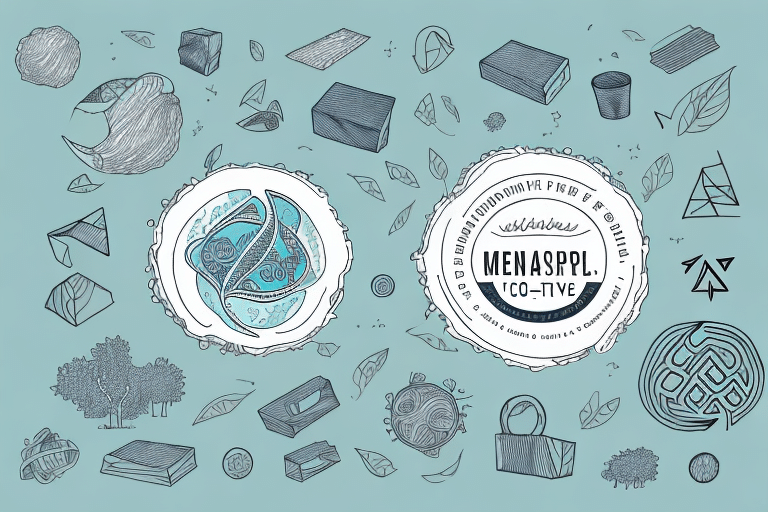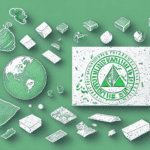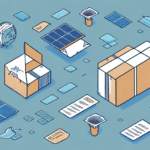Understanding the Environmental Impact of Packaging
When it comes to packaging your products, have you ever considered the impact it has on the environment? With the current state of the planet, it's crucial that we all play a role in reducing our carbon footprint. Choosing eco-friendly packaging is a simple way to make a positive impact, and it's easier than you might think.
The Environmental Impact of Traditional Packaging
Traditional packaging materials like plastics and styrofoam are not biodegradable and take hundreds of years to decompose. This results in a tremendous amount of waste piling up in landfills, polluting oceans, and harming wildlife. According to the Environmental Protection Agency (EPA), approximately 8 million metric tons of plastic waste enters the oceans each year. Additionally, manufacturing traditional packaging materials requires a significant amount of energy and contributes to greenhouse gas emissions.
The Advantages of Eco-Friendly Packaging
Alternatives to traditional packaging, such as biodegradable materials made from plant-based sources like cornstarch and sugarcane, are becoming increasingly available. These materials break down much faster than traditional packaging and do not release harmful chemicals into the environment. Moreover, using recycled materials for packaging reduces the amount of waste that ends up in landfills and conserves natural resources. By choosing eco-friendly packaging options, we can mitigate our environmental impact and protect our planet for future generations.
Benefits of Eco-Friendly Packaging
Environmental Benefits
Eco-friendly packaging can significantly reduce the amount of waste that ends up in landfills and oceans. According to a report by the Ellen MacArthur Foundation, transitioning to a circular economy for plastics could generate over $4.5 trillion by 2030. Additionally, the manufacturing process for eco-friendly packaging typically produces fewer greenhouse gases, contributing to the fight against climate change.
Business Advantages
Beyond environmental benefits, eco-friendly packaging offers several advantages for businesses. It can improve your brand image by demonstrating a commitment to sustainability, which resonates with environmentally conscious consumers. Furthermore, eco-friendly packaging is often lighter, which can reduce shipping costs and allow for more products to be shipped at once. Over time, these savings can be significant, offsetting any initial costs associated with switching to sustainable materials.
Types of Eco-Friendly Packaging Materials
Biodegradable Plastics
Biodegradable plastics, made from natural materials such as corn starch or sugarcane, break down more quickly than traditional plastics. According to a study published in Science Advances, biodegradable plastics can significantly reduce the persistence of plastic waste in the environment.
Recycled Paper and Cardboard
Recycled paper and cardboard are widely used in eco-friendly packaging due to their recyclability and biodegradability. The Paper Recycling Association reports that recycling one ton of paper can save 17 mature trees, 7,000 gallons of water, and over 4,000 kWh of energy.
Innovative Materials
Innovative materials such as mushroom-based packaging, seaweed-based packaging, and even packaging made from apples offer biodegradable and, in some cases, edible alternatives. These materials are not only environmentally friendly but also provide unique branding opportunities for businesses.
Implementing Sustainable Packaging Practices
Choosing the Right Materials
Selecting the appropriate eco-friendly packaging material is crucial. Factors such as product size, weight, and shipping requirements must be considered. Biodegradable plastics, recycled paper, and compostable materials each have their own benefits and drawbacks, depending on the specific needs of your product.
Designing for Sustainability
Designing packaging to minimize waste and maximize efficiency can further enhance sustainability. Consider using minimal packaging, designing for easy recycling or reuse, and incorporating eco-friendly messaging into your packaging design to emphasize your commitment to sustainability.
Overcoming Challenges
While adopting eco-friendly packaging, businesses may encounter challenges such as higher material costs and limited availability of certain packaging types. However, with thorough research and strategic sourcing, these obstacles can be addressed. Partnerships with sustainable suppliers and investing in bulk purchasing can help mitigate costs.
The Future of Sustainable Packaging
The demand for sustainable packaging is expected to grow as consumers become more environmentally conscious. According to a Nielsen report, 73% of global consumers say they would definitely or probably change their consumption habits to reduce their environmental impact. Businesses that adopt eco-friendly packaging now will be well-positioned to meet future market demands and regulatory requirements.
Sustainable packaging not only benefits the environment but also aligns with long-term business profitability by reducing waste and conserving resources.
Educating and Engaging Consumers
Consumer Education
Educating consumers about the importance of eco-friendly packaging can drive more sustainable choices. Utilize marketing channels such as social media, websites, and product labels to inform customers about the environmental benefits of your packaging. Sharing statistics about the impact of packaging waste and the advantages of sustainable materials can empower consumers to make informed decisions.
Case Studies
Many businesses have successfully transitioned to sustainable packaging, serving as examples for others. Companies like Patagonia and Lush have implemented eco-friendly packaging solutions and reported positive outcomes, including increased customer loyalty and enhanced brand reputation.
Government and Regulatory Influences
Government regulations play a pivotal role in promoting sustainable packaging practices. Various countries have implemented regulations that encourage or mandate the use of eco-friendly materials. For example, the European Union's Packaging and Packaging Waste Directive sets targets for recycling and waste reduction. Additionally, tax incentives and grants are available for businesses that adopt sustainable practices, making the transition more financially feasible.
Conclusion
Choosing eco-friendly packaging is not only beneficial for the environment but also advantageous for your business. As consumer demand for sustainable practices grows, adopting eco-friendly packaging can enhance your brand image, reduce costs, and ensure compliance with evolving regulations. By selecting the right materials and implementing sustainable practices, your business can contribute to a healthier planet and achieve long-term success.




















